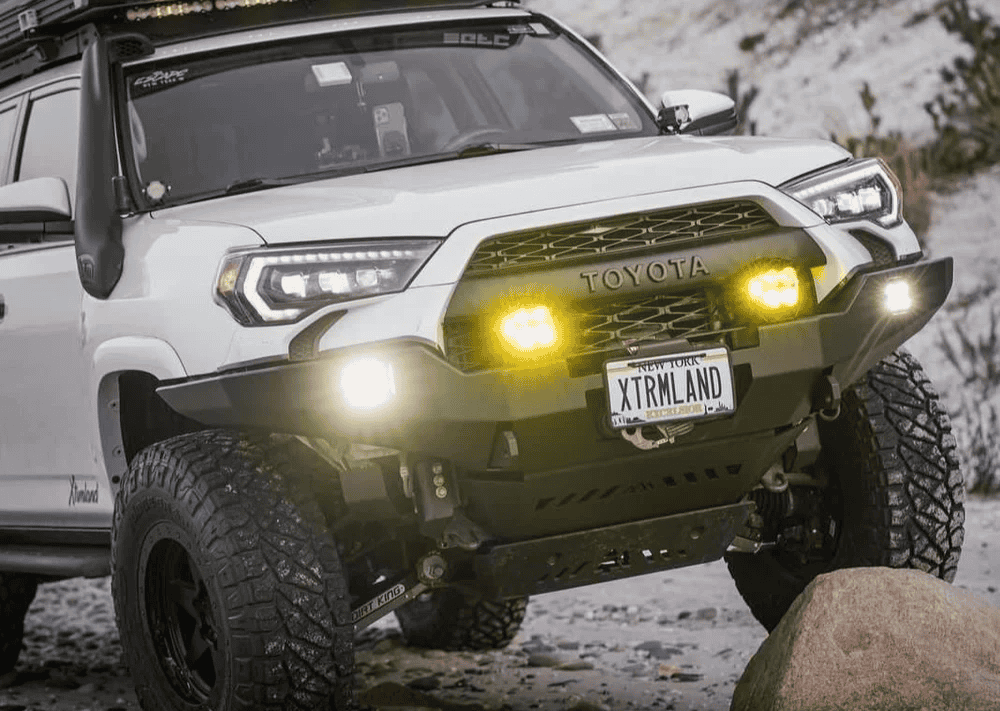Overland Vehicles

The Toyota 4Runner has earned its reputation the slow way, by stacking years of trail miles and daily driver duty without drama. A body on frame layout resists hard use, and the available low range transfer case delivers controlled torque on climbs and descents. Most trims offer generous approach and departure angles, a stable wheelbase, and practical roof load ratings for moderate cargo. Interior dimensions make it simple to sleep inside or carry a compact drawer and fridge system without deleting seats. With the right planning, this platform shifts from weekend trails to multi day routes without feeling overbuilt.
Factory traction systems like A TRAC and available crawl control are useful when tires stay on the ground and momentum is limited. Lockers, when present, give predictable forward bite in loose or cross axle situations. Tire choice matters more than raw power here. A quality all terrain in the stock diameter keeps gearing happy and protects fuel range, while a move to a true thirty three requires careful trimming and clearance checks. Select suspension components that maintain downtravel and steering geometry so the truck tracks straight at highway speeds.
Payload is the guardrail for every overland build. It includes people, fuel, water, tools, armor, rack, tent, and wiring. The 4Runner can carry a thoughtful kit, but heavy steel bumpers, winch, skid plates, and a roof tent will eat capacity quickly. Keep the heaviest items between the axles and below window height. A simple drawer with a fridge and tie downs often beats a tall cabinet stack when the road goes rough.
Power should be quiet, safe, and boring. Use an isolated house battery or a quality lithium system with proper fusing and cable routing. A fridge, lights, and device charging draw modest daily loads, so a compact solar panel plus alternator charging covers most trips. Place switches where you can reach them with a seatbelt on, and label everything. Clean wiring prevents rattles and shorts, which protects your weekend and your rig.
Start with maintenance. Fresh fluids, belts, and quality brake pads keep heat under control on long descents. Choose tires for the surface you will see most, then set pressures with a reliable gauge and carry a compressor that can refill quickly. Suspension should improve control, not just ride height. A matched spring and shock package set for your actual weight keeps the truck composed on washboards and reduces body roll on paved curves.
Armor is a tool, not a costume. Skids that protect the oil pan and transfer case are often the best first step, with rock sliders added if your routes include narrow, rocky climbs. A front bumper becomes useful when it clears approach, hosts recovery points, and allows airflow. If you add a winch, match the line rating to vehicle weight and learn safe use with a damper and tree saver.
Recovery gear should mirror your travel style. Solo travelers need redundancy, like traction boards, a real shovel, a jack suited for lifted vehicles, and rated soft shackles. Group travel can share tools and spread weight across multiple trucks. Always secure gear so it cannot become a projectile on rough roads.
Interior organization is the difference between an easy morning and a campsite yard sale. Use soft bags for clothes, a dedicated bin for tools, and a small parts kit with fuses, hose clamps, and repair tape. A compact water system with a food grade hose simplifies camp chores without splashing inside the cabin. Keep visibility clear by avoiding stacks above the rear seatback if possible.
Routes shape builds. High desert loops favor heat management, dust sealing, and long range fuel planning. Forest tracks reward tight turning, careful width, and low roof loads that avoid overhead snags. Before adding parts, write your route types, trip duration, headcount, and climate on one sheet. That clarity protects your budget and helps you enjoy the drive.
When you are ready to move from parts shopping to a coherent system, a professional shop can turn a good idea into a quiet, reliable truck. The team at OZK Customs builds complete overland setups and targeted upgrades that respect weight, geometry, and daily comfort. Explore the possibilities on overland rigs by OZK, see focused upgrade paths at custom overland upfit, and learn how we work on why choose OZK Customs. Our Fayetteville, Arkansas shop is centrally located, so pickup and shakedown trips are simple to plan.
A well executed 4Runner build is quiet on pavement, calm on corrugations, and simple to live with in camp. We map wiring so future service is painless, tune suspension to actual scale weight, and organize storage so your essentials are one reach away. Whether you want a complete custom build or a refined partial upfit, we create a plan that matches your routes and timeline. Share your goals, and we will turn your Toyota 4Runner overland vehicle into a trip ready partner.
Ready to turn your 4Runner plan into a quiet, dialed, expedition build? Talk with OZK Customs in Fayetteville, Arkansas for a complete custom build or a targeted overland upfit. We blueprint weight, wiring, storage, and ride quality so your truck drives better on pavement and performs off road. Share your trip goals and get a clear quote and timeline today.
ADDRESS:
6159 E Huntsville Rd, Fayetteville, AR 72701
PHONE:
(479) 326-9200
EMAIL:
info@ozkvans.com